Contents
- Exploring the Cultural and Historical Impact of Zodiac Signs
- The Origins of Zodiac Signs
- Zodiac Signs in Different Cultures
- Interpreting Zodiac Signs: Cultural Meanings and Symbolism
- Zodiac Signs in Popular Culture
- The Evolution of Zodiac Signs
- Conclusion
- Frequently Asked Questions
- References
-
Frequently Asked Questions
- What is the significance of Zodiac signs?
- How many Zodiac signs are there?
- What are the origins of Zodiac signs?
- How do Zodiac signs differ in different cultures?
- What do Zodiac signs represent in astrology?
- How are Zodiac signs depicted in art and literature?
- What role do Zodiac signs play in relationships?
- What controversies exist around Zodiac signs?
- How have Zodiac signs influenced fashion and design?
- What is the future of Zodiac signs?
- References
- Read More
Exploring the Cultural and Historical Impact of Zodiac Signs
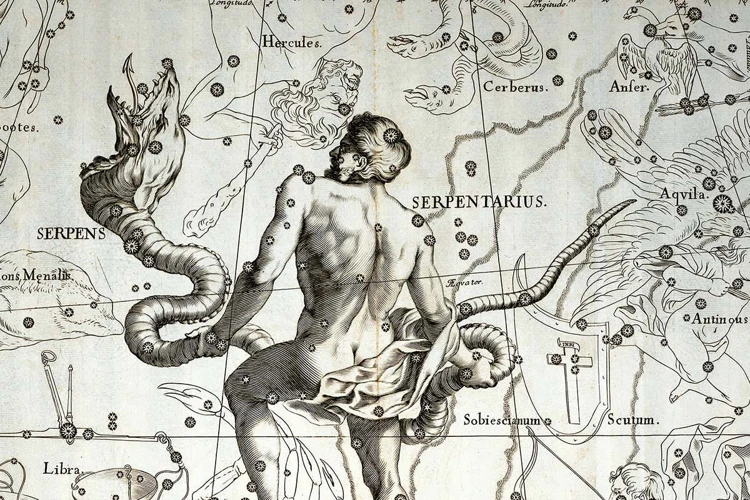
Embark on a captivating journey through time as we delve into the fascinating world of zodiac signs and their profound cultural and historical significance. These celestial phenomena have captivated human civilizations for centuries, shaping beliefs and influencing everything from astrology to art, literature, and even fashion. In this captivating article, we will delve into the origins of zodiac signs and explore their connections to ancient civilizations such as Mesopotamia, Egypt, and Greece. We will also uncover the diverse interpretations of zodiac signs in different cultures, including the Chinese zodiac, Vedic astrology, and the Mesoamerican zodiac. Additionally, we will delve into the meanings and symbolism of zodiac signs, their role in popular culture, and even their controversial evolution and scientific perspectives. Get ready to be enthralled by the enduring impact and enduring fascination of zodiac signs on our collective consciousness.
The Origins of Zodiac Signs
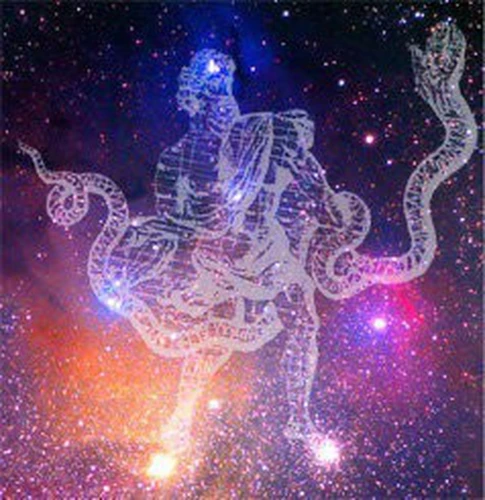
The origins of zodiac signs trace back to ancient civilizations, where humans gazed at the night sky and sought to understand the mystical movements of the celestial bodies. One of the earliest known records of zodiac signs can be found in Ancient Mesopotamia, where astronomers developed a 12-sign zodiac system based on the observation of constellations. In Egypt, zodiac signs were linked to the gods and goddesses, with the sun god Horus playing a prominent role. The influence of Greek mythology on zodiac signs is evident in the popularization of the 12-sign zodiac system attributed to the ancient Greeks. The Greeks associated each sign with a mythological figure, creating a rich tapestry of stories that brought the zodiac to life. The myth of Ophiuchus, the Serpent Bearer, is an intriguing addition to the traditional zodiac and has its roots in Greek culture. These early civilizations laid the foundation for the understanding and interpretation of zodiac signs that continues to this day.
Ancient Mesopotamia: Birthplace of the Zodiac
In ancient Mesopotamia, a region located in present-day Iraq, the concept of the zodiac was born. Mesopotamian astronomers carefully observed the night sky and noticed that certain constellations appeared to move in a cyclical pattern throughout the year. These astronomers developed a 12-sign zodiac system, incorporating these celestial movements into their calendar and agricultural practices. Each sign was associated with a specific constellation that marked a particular time of the year. The zodiac signs had a practical purpose in Mesopotamia, as they were used to determine the seasons and agricultural activities. This early version of the zodiac system served as a foundation for later civilizations to build upon and refine. The influence of ancient Mesopotamia on the development of astrology and the zodiac cannot be overstated. The accurate observations and categorizations made by Mesopotamian astronomers laid the groundwork for future civilizations to create more elaborate interpretations of the zodiac signs and their significance in people’s lives. To this day, the birthplace of the zodiac continues to fascinate historians and astrologers alike, offering a glimpse into the ancient wisdom and connection to the cosmos that our ancestors possessed.
Egyptian Connection: Horus and the Zodiac
The Egyptian connection between Horus and the Zodiac is a fascinating aspect of the ancient civilization’s relationship with astrology and celestial phenomena. Horus, the revered Egyptian god, was often depicted with the head of a falcon, symbolizing the sky and its celestial bodies. In Egyptian mythology, Horus was associated with the sun and often seen as the sky god, bringing light and warmth to the world. This connection between Horus and the sun laid the foundation for the association between the Zodiac and Egyptian beliefs.
In Egyptian astrology, each zodiac sign was linked to a specific god or goddess, with Horus being particularly influential in the understanding of zodiac signs. The twelve zodiac signs were believed to be under the watchful eye of Horus, who ensured their proper alignment and influence on human destiny. Just as Horus guided the sun on its daily journey across the sky, he was believed to guide individuals born under each zodiac sign, shaping their personalities and destinies.
The Egyptian connection between Horus and the Zodiac is reflective of the ancient civilization’s profound fascination with the cosmos and their desire to understand the influence of celestial bodies on human life. Their belief in the divine connection between Horus and the zodiac signs further emphasizes the significance and impact of astrology in ancient Egyptian culture.
To this day, remnants of the Egyptian influence on astrology can be seen in modern interpretations of zodiac signs. The mystical and powerful association of Horus with the Zodiac continues to captivate individuals seeking to understand their place in the world and the influence of the celestial realm.
For more information on the impact of celestial bodies on personality, you can read our article on planetary aspects and personality.
Greek Influence: The Mythological Zodiac
In , we delve into the profound impact that Greek mythology had on the development of the zodiac signs. The ancient Greeks attributed each zodiac sign to a specific mythological figure, weaving captivating stories that added depth and meaning to the astrological system. Here is a closer look at some of the key zodiac signs and their corresponding Greek mythological origins:
1. Aries (The Ram): According to Greek mythology, Aries represents the mighty golden ram that rescued Phrixus and Helle. The ram was sent by Hermes, the messenger of the gods, and carried the siblings to safety across treacherous seas.
2. Taurus (The Bull): Taurus is associated with the myth of Zeus, the king of the gods, who transformed himself into a magnificent white bull to seduce and abduct Europa, a Phoenician princess.
3. Gemini (The Twins): The story behind Gemini revolves around the twin brothers Castor and Pollux. Castor was a skilled horseman, while Pollux was a formidable boxer. They became divine figures known as the Dioscuri and were renowned for their brotherly bond.
4. Leo (The Lion): The mythological inspiration behind Leo is the Nemean Lion, a fearsome creature that was eventually slain by the hero Heracles (Hercules) as part of his twelve labors.
5. Scorpio (The Scorpion): Scorpio represents the scorpion sent by the goddess Artemis to kill the mighty hunter Orion, who had boasted of his ability to defeat any creature. The scorpion prevailed, and Zeus placed both Orion and the scorpion in the night sky as constellations.
These are just a few examples of how Greek mythology infused the zodiac signs with fascinating narratives and symbolism. Exploring the mythological origins of the zodiac deepens our appreciation for this ancient astrological system and highlights the enduring impact of Greek culture and storytelling. To further delve into the intricate connection between mythology and astrology, you can read our article on the mythological origins of Ophiuchus, the thirteenth sign of the zodiac.
Zodiac Signs in Different Cultures
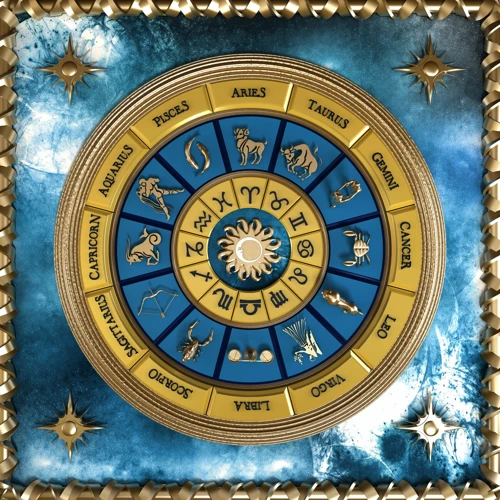
Zodiac signs have transcended borders and have been embraced by various cultures around the world, each with their unique interpretations and traditions. The Chinese zodiac is perhaps one of the most well-known, consisting of 12 animal signs that rotate in a 12-year cycle, with each sign representing different personality traits and characteristics. In Vedic astrology from India, the zodiac, known as the “Rashi,” consists of 12 signs based on the position of the moon at the time of birth, and plays a significant role in determining one’s personality and destiny. The Mesoamerican zodiac is closely tied to the ancient Maya and Aztec civilizations, who developed complex calendars and assigned specific symbols to each day, representing unique energies and qualities. These diverse cultural interpretations of zodiac signs offer a rich tapestry of astrological knowledge and provide fascinating insights into the way different societies perceive and incorporate celestial phenomena into their beliefs and traditions.
Chinese Zodiac: The 12 Animal Signs
The Chinese zodiac is a fascinating and ancient system that associates individuals with one of twelve animal signs based on their birth year. Each animal sign represents particular personality traits and characteristics. The 12 animal signs in the Chinese zodiac are the Rat, Ox, Tiger, Rabbit, Dragon, Snake, Horse, Sheep, Monkey, Rooster, Dog, and Pig. These animal signs are believed to have originated from the ancient Chinese Emperor Huangdi, who assigned each animal sign to a year in a specific order. According to legend, the order was determined based on the animals’ arrival at the Emperor’s party. The Chinese zodiac holds immense cultural significance and is widely used in various aspects of Chinese life and traditions. It is often consulted for various life decisions and compatibility assessments, including love matches and career choices. Each animal sign is also associated with one of the five elements – Wood, Fire, Earth, Metal, and Water, which further adds depth to the interpretations of personality traits and predicting future fortunes. The Chinese zodiac continues to be embraced and celebrated, especially during the Lunar New Year, where each passing year is dedicated to a specific animal sign, marking the beginning of a new cycle in the zodiac calendar.
Vedic Astrology: The Indian Zodiac
Vedic Astrology, also known as Jyotish, is an ancient system of astrology that originated in India and continues to be widely practiced today. The Indian Zodiac, a fundamental aspect of Vedic Astrology, plays a central role in guiding individuals’ lives and determining their personality traits and life events. Here are some important features and characteristics of Vedic Astrology:
1. The 12 Rashis (Zodiac Signs): The Indian Zodiac consists of 12 rashis or zodiac signs, each spanning a 30-degree arc of the celestial sphere. These signs are Aries (Mesha), Taurus (Vrishabha), Gemini (Mithuna), Cancer (Karka), Leo (Simha), Virgo (Kanya), Libra (Tula), Scorpio (Vrishchik), Sagittarius (Dhanu), Capricorn (Makara), Aquarius (Kumbha), and Pisces (Meena).
2. Planetary Rulers: Each rashi in the Indian Zodiac is associated with a ruling planet. These planetary rulers greatly influence the characteristics and traits associated with each zodiac sign.
3. Birth Chart Analysis: Vedic Astrology places great emphasis on creating an individual’s birth chart, also known as a horoscope or janam Kundali. This chart is a reflection of the positions of the planets at the time of an individual’s birth and provides insights into various aspects of their life, such as career, relationships, health, and spirituality.
4. Navagrahas (Nine Planets): In Vedic Astrology, the Indian Zodiac incorporates the influence of the Navagrahas, which are the nine celestial bodies recognized in Hinduism. These include the Sun (Surya), Moon (Chandra), Mars (Mangal), Mercury (Budha), Jupiter (Guru), Venus (Shukra), Saturn (Shani), Rahu (North Lunar Node), and Ketu (South Lunar Node).
5. Mahadasha and Antardasha: Vedic Astrology also considers the concept of Mahadasha and Antardasha, which are planetary periods and sub-periods that influence an individual’s life journey. These periods are determined by the positions of the planets in the birth chart and provide a deeper understanding of one’s life experiences.
The Indian Zodiac in Vedic Astrology offers a comprehensive approach to understanding human nature and predicting future events. It blends spirituality, mathematics, and astronomical observations to guide individuals in various aspects of their lives. With its rich symbolism and deep connection to Indian culture, Vedic Astrology continues to be cherished and practiced by millions, providing valuable insights and guidance to those who seek its wisdom.
Mesoamerican Zodiac: The Maya and Aztec Calendar
The Mesoamerican Zodiac holds a fascinating place in history, particularly within the cultural and historical backdrop of the Maya and Aztec civilizations. In the Mesoamerican region, the calendar was of paramount importance and played a crucial role in daily life, agriculture, and religious ceremonies. The Maya and Aztecs developed intricate systems of timekeeping, which included their own unique versions of the zodiac.
The Maya Calendar: The Maya civilization, known for its advanced understanding of astronomy and mathematics, developed the renowned Mayan Long Count calendar. This calendar consisted of various cycles, including the Haab’ (solar calendar) and the Tzolk’in (sacred calendar). The Tzolk’in comprised 260 days, with each day represented by a combination of a number and a glyph. These glyphs were associated with specific energies, deities, and animals, forming the basis of the Maya zodiac. The Maya zodiac consisted of 13 animal signs, including the jaguar, serpent, and eagle, each with its own unique symbolism and characteristics.
The Aztec Calendar: The Aztecs, influenced by the Maya civilization, also had their own calendar system known as the Aztec Sun Stone or the Aztec calendar stone. This colossal stone carving, discovered in Mexico City, depicts various astronomical and mythological symbols. The Aztec calendar was divided into several interlocking cycles, with the most important cycles being the 365-day solar calendar and the 260-day sacred calendar. Similar to the Maya zodiac, the Aztec zodiac consisted of 20 day signs, known as the “day lords,” with each sign associated with a particular deity or natural element.
The Mesoamerican zodiac played a significant role in determining an individual’s personality traits, fate, and even their compatibility with others. These zodiac systems influenced various aspects of Mesoamerican society, including agriculture, warfare, and religious practices. The intricate symbolism and cultural importance of the Mesoamerican Zodiac continue to captivate historians, archaeologists, and those interested in the rich heritage of the Maya and Aztec civilizations.
Interpreting Zodiac Signs: Cultural Meanings and Symbolism
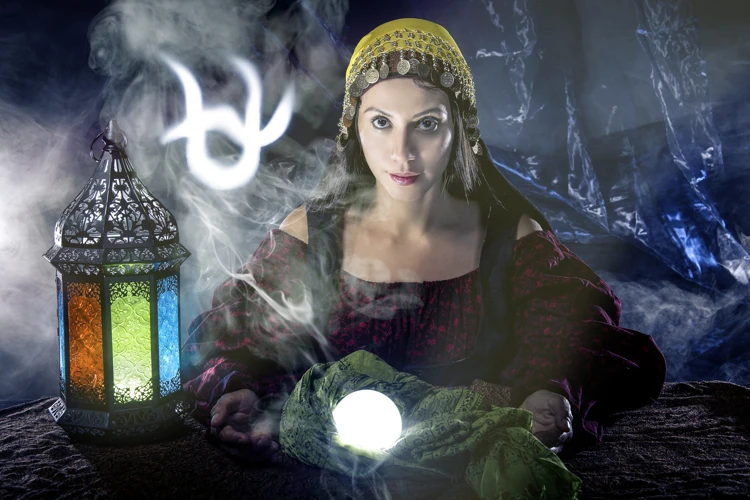
Interpreting zodiac signs involves exploring the cultural meanings and symbolism associated with each astrological sign. Astrology enthusiasts believe that the alignment of the planets and stars at the time of an individual’s birth can influence their personality traits and life path. Each zodiac sign carries unique characteristics and symbolism that reflect the cultural beliefs and values of different societies. For example, Aries, the first sign of the zodiac, is often associated with courage, leadership, and independence. In art and literature, zodiac signs have been depicted in various ways, symbolizing different aspects of human nature and the cosmos. They have also been intricately interwoven into religious and mythological narratives, embodying divine archetypes and cosmic forces. Exploring the cultural meanings and symbolism of zodiac signs provides a window into the complex tapestry of human beliefs and the cosmic significance attributed to the stars above.
Astrology and Personality Traits
Astrology and personality traits have been intricately intertwined for centuries, with many people turning to the zodiac as a guide to understanding themselves and others. Each zodiac sign is believed to possess distinct characteristics that shape an individual’s personality. Aries, known for their boldness and leadership qualities, are often seen as natural-born trailblazers. Taurus individuals, on the other hand, are renowned for their practicality and determination. Geminis are known for their intellectual curiosity and adaptability, while Cancers are prized for their emotional depth and nurturing nature. Leos exude confidence and charisma, while Virgos are known for their attention to detail and analytical prowess. Libras are renowned for their harmony-seeking nature, and Scorpios are celebrated for their intensity and passion. Sagittarians are characterized by their adventurous spirit, while Capricorns are known for their ambition and drive. Aquarians are celebrated for their independence and humanitarian nature, while Pisces individuals are revered for their empathy and artistic sensibility. While astrology and personality traits are not scientifically proven, many find solace and self-reflection in exploring the connection between their zodiac sign and their individual characteristics.
Zodiac Signs in Art and Literature
Zodiac signs have long served as a rich source of inspiration in the realms of art and literature. Artists and writers have sought to capture the essence of each zodiac sign, using them as symbols and motifs in their creative works. In art, zodiac signs are frequently depicted through various mediums such as paintings, sculptures, and even tattoos. They often represent the personalities and characteristics associated with each sign, allowing viewers to connect with their own astrological identity. From the iconic Ram of Aries to the mystical Fish of Pisces, these visual representations bring the zodiac to life and provide a visual language for exploration and self-expression. Similarly, zodiac signs have played a significant role in literature, with writers incorporating them as important elements in their stories and poems. They can serve as character traits, plot devices, or thematic symbols, adding depth and complexity to the narrative. Whether it’s a Leo protagonist showcasing bravery and leadership or a Libra love story exploring balance and harmony, zodiac signs infuse literature with a touch of cosmic wonder. Through art and literature, zodiac signs continue to invite us to ponder the mysteries of the universe and explore the intricacies of human existence.
Zodiac Signs in Religion and Mythology
Zodiac signs have played a significant role in shaping religious and mythological beliefs across various cultures throughout history. Here, we explore how zodiac signs intersect with religion and mythology, offering insight into their profound influence.
1. Ancient Egypt:
In Egyptian mythology, the gods and goddesses were closely associated with the zodiac signs. For instance, the god Ra was linked to the sun, and thus the zodiac sign Leo. Similarly, the goddess Isis was connected with Virgo due to her association with fertility and harvest.
2. Hinduism:
In Hinduism, zodiac signs are intricately woven into the belief system. Known as “Rashi,” these signs hold great importance in determining a person’s horoscope and guiding their path in life. Each sign is associated with specific deities and is thought to represent certain qualities and characteristics.
3. Greek Mythology:
Greek mythology has left a lasting impact on the symbolism of zodiac signs. The 12 signs were believed to be influenced by Greek gods and heroes. A prominent example is Aries, associated with the ram that bore the Golden Fleece in the myth of Jason and the Argonauts. Similarly, Taurus symbolizes the shape-shifting Zeus, who transformed into a bull to carry away the princess Europa.
4. Norse Mythology:
The zodiac signs find their Norse counterparts in the runic zodiac of Norse mythology. These signs, known as “Futharks,” were often associated with gods and goddesses. For instance, the sign Berkano was linked to the fertility goddess, while Jera represented the harvest goddess.
5. Chinese Mythology:
In Chinese mythology, the zodiac signs are linked to the Twelve Earthly Branches. Each animal sign, such as the Rat, Dragon, or Monkey, is associated with specific traits and characteristics. These animal signs not only guide daily life but also hold cultural and spiritual symbolism.
6. Indigenous Cultures:
Various indigenous cultures like the Native Americans and Australian Aborigines have their own astrological systems that incorporate zodiac signs. These signs often relate to animal totems, guiding spiritual beliefs, and offering insights into personal qualities.
The intertwining of zodiac signs with religion and mythology showcases the deep-rooted beliefs and cultural significance associated with the celestial patterns. From influencing deities and spiritual practices to providing guidance and symbolism, zodiac signs have been intrinsic to our understanding of the divine and the human experience throughout history.
Zodiac Signs in Popular Culture
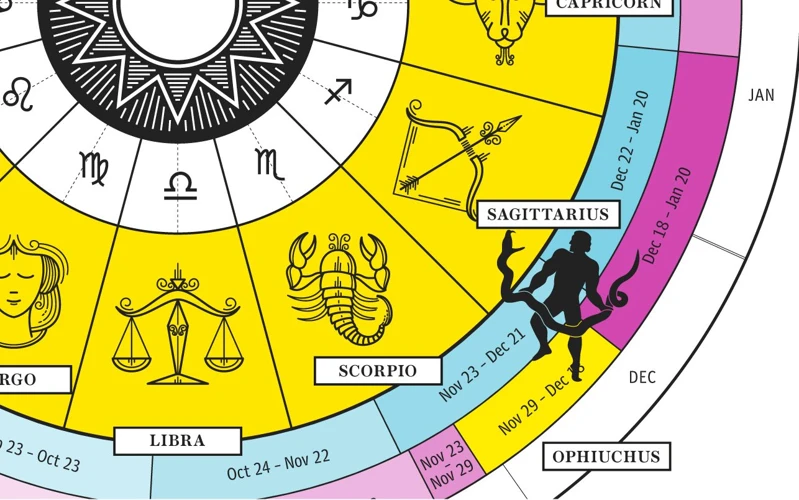
Zodiac signs have permeated popular culture in numerous ways, captivating the imagination of people across the globe. One of the most prevalent areas where zodiac signs have made their mark is in the realm of love and relationships. Many individuals turn to their zodiac signs to gain insights into compatibility with potential partners, exploring the compatibility of their signs to gauge the likelihood of a harmonious relationship. Zodiac signs have also found their way into the world of fashion and design, with designers incorporating zodiac motifs and symbols into clothing, accessories, and jewelry. Zodiac signs have influenced the realms of entertainment and media. From blockbuster movies and TV shows to music and literature, references to zodiac signs can be found in various forms of media, adding an element of mystique and intrigue to the storytelling. Whether it’s through horoscopes, personality quizzes, or even zodiac-themed merchandise, zodiac signs have firmly established themselves as cultural touchstones, connecting individuals to the broader collective consciousness.
Zodiac Compatibility: Love and Relationships
When it comes to zodiac compatibility in love and relationships, individuals often turn to astrology to gain insights into their romantic partnerships. Each zodiac sign is believed to possess distinctive characteristics and traits that can influence the dynamics and compatibility between two people. Astrologers analyze the placement of the sun, moon, and other planetary aspects in each person’s birth chart to determine the potential for harmony or conflict. For example, a water sign like Cancer may be highly compatible with a fellow water sign like Pisces or Scorpio due to their emotional depth and intuitive nature. On the other hand, a fire sign like Leo may find passion and excitement with an air sign such as Gemini or Libra, who bring intellectual stimulation and social charm to the relationship. However, it is important to note that zodiac compatibility is not a definitive predictor of relationship success or failure. Factors such as communication, shared values, and individual growth also play crucial roles in forming and maintaining a strong bond. At the end of the day, while zodiac compatibility can provide some insights, it is ultimately up to the individuals involved to cultivate trust, understanding, and love in their relationships.
Zodiac Signs in Fashion and Design
Zodiac signs have made a significant impact on the world of fashion and design. From clothing to accessories, many individuals turn to their zodiac signs as sources of inspiration for their personal style. Designers often incorporate zodiac symbols and motifs into their collections, creating garments and accessories that resonate with astrology enthusiasts. Zodiac sign-themed jewelry is particularly popular, with necklaces, bracelets, and rings featuring zodiac symbols and birthstones. Astrological prints and patterns also make their way onto clothing, adding a celestial touch to outfits. Fashion magazines and influencers often provide style guides based on zodiac signs, suggesting appropriate colors, patterns, and styles that align with each sign’s personality traits. This connection between zodiac signs and fashion extends beyond individual style choices and is also seen in runway shows and fashion campaigns. Designers draw inspiration from the symbolism and mythology associated with zodiac signs, infusing their collections with elements that resonate with astrological themes. The enduring appeal of zodiac signs in fashion and design highlights the way in which astrology has permeated various aspects of our lives, including our personal aesthetic choices.
Zodiac Signs in Entertainment and Media
Zodiac signs have permeated popular culture, making their way into various forms of entertainment and media. From movies and television shows to music and literature, the influence of zodiac signs can be found in a multitude of ways. Here are some examples of how zodiac signs have become a part of our entertainment and media landscape:
- Movies and Television Shows: Many films and TV shows feature characters who possess traits associated with their zodiac signs. Whether it’s a fiery and passionate Aries or a mysterious and intuitive Scorpio, these personality traits can add depth to fictional characters and shape their storylines. Additionally, some movies and TV shows might incorporate zodiac-based themes, such as astrology-based plotlines or even characters who possess supernatural zodiac-related abilities.
- Music: Artists often draw inspiration from zodiac signs in their music and lyrics. Songs may reference specific zodiac signs or use astrological symbolism to convey emotions or themes. Additionally, musicians themselves may identify strongly with their zodiac sign and incorporate it into their public persona or stage presence.
- Literature: Zodiac signs can play a role in various genres of literature, from fantasy novels to romance novels. Authors may use zodiac sign traits to develop characters, their relationships, and the overall plot. They may also create astrological systems within their fictional worlds, where zodiac signs dictate magical abilities or societal hierarchies.
In addition to these mediums, zodiac signs also appear in fashion, where designers incorporate zodiac-themed collections or incorporate zodiac motifs into their designs. Social media platforms have become a hub for zodiac-related content, with influencers, memes, and accounts dedicated to providing zodiac sign-specific horoscopes, compatibility analysis, and general astrological insights. The pervasive presence of zodiac signs in entertainment and media highlights their enduring popularity and their ability to capture our imaginations in various creative outlets.
The Evolution of Zodiac Signs
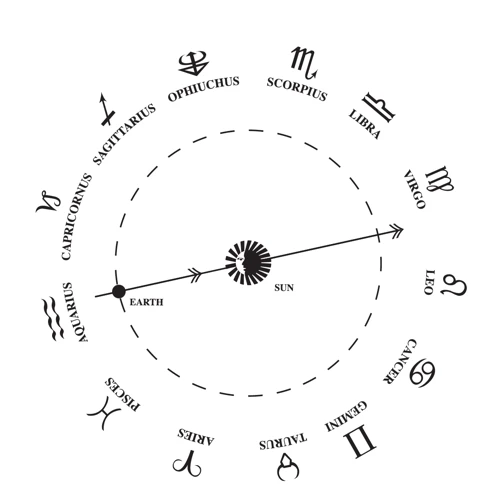
As cultures and societies have evolved over time, so too have zodiac signs undergone transformations and adaptations. One notable controversy in the evolution of the zodiac is the inclusion of the constellation Ophiuchus. This addition, which sparked debate among astrologers, expanded the traditional 12-sign zodiac system to include a 13th sign. Another aspect of the evolution of zodiac signs is the modern interpretations and reinterpretations that have emerged. With the advancements in scientific knowledge and the rise of skepticism towards astrology, some view zodiac signs as purely symbolic or dismiss them entirely. However, zodiac signs remain a significant part of popular culture, influencing everything from love compatibility to fashion trends. While scientific perspectives may challenge the traditional beliefs associated with zodiac signs, the enduring fascination and cultural impact they hold cannot be denied.
The Addition of Ophiuchus: Controversy and Debate
The Addition of Ophiuchus to the zodiac system has sparked controversy and debate among astrologers and enthusiasts alike. Ophiuchus, also known as the Serpent Bearer, is not a new constellation, but its inclusion as a zodiac sign brought a significant shift in astrological interpretations. This addition stems from the discrepancy between the twelve traditional zodiac signs and the actual number of constellations along the ecliptic. Ophiuchus, located between Scorpio and Sagittarius, gained attention when the astronomical community acknowledged its existence. Proponents argue that Ophiuchus represents a thirteenth zodiac sign, leading to a change in the dates associated with each sign. This alteration sparked a heated debate among astrologers who questioned the impact on previously defined personality traits and compatibility. While some embrace the inclusion of Ophiuchus, others believe that the traditional zodiac system, rooted in centuries-old astrological practices, should remain intact. Regardless of personal opinions, the controversy surrounding the addition of Ophiuchus demonstrates the fluidity and ongoing evolution of zodiac interpretations.
Modern Adaptations and Reinterpretations
In the realm of astrology and popular culture, modern adaptations and reinterpretations of zodiac signs have emerged, reflecting the evolving beliefs and interests of contemporary society. One notable trend is the rise of personalized horoscopes and astrology apps, which provide individuals with tailored daily or weekly predictions based on their zodiac sign. These digital platforms have made astrology more accessible and relatable to a wider audience, attracting both skeptics and enthusiasts alike. Additionally, there has been a surge in the integration of zodiac signs into various artistic and design mediums. From zodiac-inspired jewelry and clothing to home decor and even tattoo designs, people are embracing their zodiac sign as a form of self-expression and identity. Modern reinterpretations of zodiac signs can be seen in the field of LGBTQ+ astrology, where astrologers explore the intersection between sexual orientation, gender identity, and zodiac characteristics. This inclusive approach has allowed individuals from diverse backgrounds to connect with and find personal meaning in their zodiac sign. It is evident that the enduring fascination with zodiac signs has spurred a wave of modern adaptations and reinterpretations, allowing them to maintain relevance in an ever-changing world.
Scientific Perspectives on Zodiac Signs
Scientific inquiry has cast a skeptical eye on the traditional beliefs and interpretations surrounding zodiac signs. From the perspective of astronomy and astrophysics, there is a clear distinction between the zodiac constellations and the astrological zodiac signs. The zodiac constellations are a set of fixed patterns of stars that the sun appears to pass through over the course of a year. However, due to the precession of Earth’s axis, the alignment of the constellations has shifted over time. This means that the sun’s location during a particular time of year no longer corresponds to the traditional astrological sign associated with that period.
Scientific research has failed to provide empirical evidence supporting the claims of astrology. Critics argue that the personality traits and predictions associated with zodiac signs lack a scientific basis and are instead based on subjective observations and generalizations. Controlled studies examining the relationship between birth dates and personality traits have largely found no significant correlations.
While astrology remains popular among many individuals, especially in matters of love, career, and personal development, the scientific community generally rejects its claims. Astrology is often seen as a pseudoscience, lacking the rigorous methodology and empirical evidence required for scientific validation. However, it is worth noting that some psychologists acknowledge the psychological effects of astrology, such as the placebo effect or the self-fulfilling prophecy.
While zodiac signs hold deep cultural and historical significance, the scientific perspective casts doubt on their validity as a predictive tool. It is important to approach astrology with a critical mindset, recognizing its potential for personal interpretation and self-reflection rather than relying on it as an absolute guide to life’s mysteries.
Conclusion

In conclusion, the exploration of the cultural and historical impact of zodiac signs has unveiled a rich tapestry of beliefs, symbolism, and influences across various civilizations and time periods. From the ancient origins in Mesopotamia to the enduring fascination in modern popular culture, zodiac signs have left an indelible mark on human civilization. They have shaped our understanding of astrology, influenced our interpretations of personality traits, and served as a wellspring of inspiration for art, literature, religion, and mythologies. Despite debates and controversies surrounding the addition of Ophiuchus and scientific perspectives questioning the validity of zodiac signs, their enduring appeal and influence cannot be denied. As we continue to navigate the celestial wonders of the universe, the exploration of zodiac signs will undoubtedly continue to captivate and intrigue generations to come. Whether you are a believer or skeptic, the history and significance of zodiac signs remain a testament to the enduring power of human curiosity and our desire to seek meaning in the cosmos. So, gaze up at the stars, ponder the alignment of the planets, and let the mystique of the zodiac signs ignite your imagination and wonder.
Frequently Asked Questions

FAQs About Zodiac Signs
1. What are zodiac signs?
Zodiac signs are twelve distinct astrological signs that are associated with specific time periods throughout the year. These signs are believed to influence a person’s character, personality traits, and potential destiny.
2. How were zodiac signs determined?
The modern interpretation of zodiac signs is primarily based on the 12 constellations along the ecliptic – the apparent path of the sun across the sky. Each zodiac sign corresponds to a particular constellation that the sun passes through during the year.
3. Can zodiac signs predict the future?
Astrology suggests that zodiac signs can provide insight into certain aspects of a person’s life, but they do not have the power to predict the future with absolute certainty. Astrological readings are interpreted based on various factors and should be taken as guidance rather than set predictions.
4. Are zodiac signs the same in different cultures?
No, different cultures have their unique interpretations of zodiac signs. While some cultures may share similarities, such as the 12 animal signs in the Chinese zodiac, the symbols and meanings can vary significantly from one culture to another.
5. Can zodiac signs affect compatibility in relationships?
Astrology suggests that zodiac signs can influence compatibility in relationships to some extent. Certain signs are believed to have natural affinities, while others may face more challenges. However, many factors contribute to a successful relationship, and it’s important to consider individual personalities and compatibility beyond just zodiac signs.
6. Are zodiac signs scientifically valid?
Scientifically, zodiac signs are not recognized as legitimate predictors of personality traits or future events. Astrology is considered a pseudoscience and is not supported by empirical evidence. However, it continues to be popular as a cultural and philosophical practice.
7. What is the significance of zodiac signs in art and literature?
Zodiac signs have been a source of inspiration for artists and writers throughout history. They have been depicted in paintings, sculptures, and written works, symbolizing various traits, emotions, and archetypes associated with each sign.
8. Can zodiac signs be used to guide career choices?
Some people believe that zodiac signs can provide insights into suitable career paths based on a person’s personality traits. However, career choices should consider individual skills, interests, and opportunities, rather than relying solely on astrological guidance.
9. What is the controversy surrounding Ophiuchus?
Ophiuchus is a constellation often referred to as the thirteenth zodiac sign. Its addition to the zodiac system has sparked debate among astrologers, as it would disrupt the existing 12-sign system and alter the dates associated with each sign.
10. Is there a connection between zodiac signs and mythology?
Yes, zodiac signs are often intertwined with mythology in various cultures. Mythological figures are associated with different signs, and their stories contribute to the symbolism and interpretations of the zodiac signs we know today.
References
- When The Babylonians Invented The Horoscope
- Exploring the Depths of Horoscope and Astrology
- The Origin of Zodiac Signs Symbols
Frequently Asked Questions

What is the significance of Zodiac signs?
Zodiac signs hold cultural and historical significance as they are believed to offer insights into personality traits, relationships, and the future. They have been used for centuries as a guide for understanding human behavior and making important life decisions.
How many Zodiac signs are there?
There are 12 Zodiac signs in Western astrology, each representing different personality traits and characteristics. These signs are Aries, Taurus, Gemini, Cancer, Leo, Virgo, Libra, Scorpio, Sagittarius, Capricorn, Aquarius, and Pisces.
What are the origins of Zodiac signs?
The origins of Zodiac signs can be traced back to ancient civilizations such as Mesopotamia, Egypt, and Greece. These cultures developed astrology systems based on celestial observations and their belief in the connection between the stars and human life.
How do Zodiac signs differ in different cultures?
Zodiac signs vary across cultures. Chinese astrology, for example, uses a different set of animal signs to represent different personality traits. Vedic astrology in India also has its own unique system of Zodiac signs. Mesoamerican cultures, such as the Maya and Aztecs, had their own calendar and Zodiac system.
What do Zodiac signs represent in astrology?
In astrology, Zodiac signs represent different aspects of an individual’s personality. They can reveal traits, strengths, weaknesses, and even compatibility with others. Each sign is associated with specific planetary alignments that influence a person’s life and behaviors.
How are Zodiac signs depicted in art and literature?
Zodiac signs have been a popular theme in art and literature throughout history. They are often depicted through symbols or illustrations, representing the unique characteristics and qualities associated with each sign. Artists and writers use Zodiac signs to convey deeper meanings and symbolism in their works.
What role do Zodiac signs play in relationships?
Many people use Zodiac signs to gauge compatibility in relationships. By comparing the traits and elements of two individuals’ signs, people can gain insights into the strengths and challenges they may face as a couple. Zodiac signs can provide guidance for understanding dynamics and potential areas of conflict.
What controversies exist around Zodiac signs?
One controversy revolves around the addition of a 13th Zodiac sign, Ophiuchus, which is not widely recognized in Western astrology. Another debate centers around the scientific validity of Zodiac signs and their correlation with individual characteristics. Critics argue that astrology lacks empirical evidence and should be viewed as a belief system rather than a science.
How have Zodiac signs influenced fashion and design?
Zodiac signs have had a significant impact on fashion and design. Many designers incorporate Zodiac symbols and elements into their collections, creating products that cater to people’s astrological preferences. Zodiac-inspired jewelry, clothing, and accessories are popular among those who want to express their individuality and connection to the stars.
What is the future of Zodiac signs?
The future of Zodiac signs is constantly evolving. Astrologers and enthusiasts continue to interpret and adapt astrology to modern contexts, incorporating new ideas and perspectives. While Zodiac signs have a rich history, their cultural and symbolic meanings will continue to evolve as society progresses and new discoveries are made.







